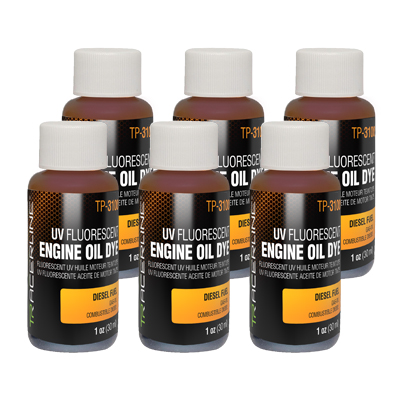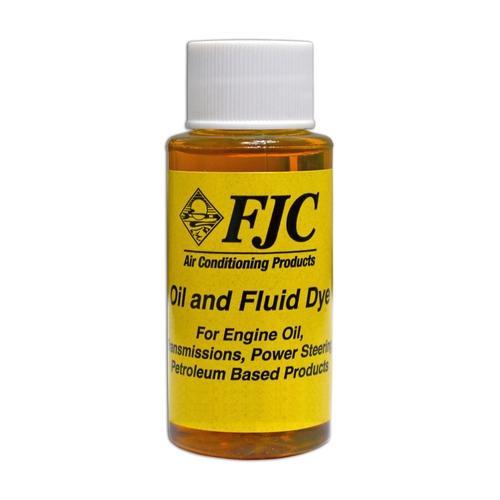To dye engine oil, add a specialized UV dye directly into the engine oil. The dye will mix with the oil and make any leaks visible under UV light.
Dyeing engine oil is a simple and effective method to detect oil leaks and identify potential issues in the engine. By adding the dye, you can easily spot leaks and take necessary actions to address them, ensuring optimal performance and preventing potential damage.
This technique is commonly used by automotive professionals to quickly and accurately identify oil leaks in engines. With the UV dye, you can efficiently troubleshoot and maintain the performance of your vehicle’s engine.
Introduction To Engine Oil Dyeing
Engine oil dyeing can be a beneficial process for identifying and locating potential leaks in the oil system. The addition of dye to the engine oil can help in quickly and effectively detecting leaks and other issues. By using UV light and the dye, it is possible to easily spot the source of the leak and take appropriate action. The benefits of using engine oil dye include the ability to detect leaks that may not be visible to the naked eye and to identify potential problems before they escalate. Additionally, the dye remains visible in the oil for a considerable amount of time, allowing for extended monitoring and detection. Overall, the use of engine oil dye can contribute to the maintenance and longevity of the engine by facilitating early detection and resolution of oil system issues.

Credit: tracerproducts.com
Types Of Dyes For Engine Oil
When it comes to choosing the right dye for engine oil, it’s essential to understand the different types of UV dyes available. UV dyes are designed to be added to the oil, and they glow brightly under UV light, making it easier to detect leaks. When using UV dyes, it’s crucial to follow the manufacturer’s instructions for the correct application and quantity. UV dyes are highly effective in finding even the smallest leaks in the engine oil system. It’s important to select a high-quality UV dye that is compatible with the engine oil to ensure accurate results.
Preparation Steps
When it comes to dyeing engine oil, there are a few important preparation steps to follow. First, gather the necessary materials, such as UV dye, a UV light, and safety glasses. It is crucial to always follow the manufacturer’s instructions when using these products. Before adding the dye, remove the oil cap to access the engine oil. Next, locate potential oil leaks by inspecting areas such as the oil filter, oil pan, and valve cover gasket. Look for signs of oil residue or stains that indicate a leak. Using UV dye with a UV light can help make the leaks more visible. Finally, it is important to note that the dye will eventually dissipate, so it is recommended to conduct the inspection promptly after adding the dye. By following these steps and taking necessary safety precautions, you can effectively find and diagnose engine oil leaks using dye.

Credit: adsco.com
Dyeing Process
Adding dye to engine oil is a process that can be used to detect leaks and identify potential engine issues. It involves using oil-soluble dyes that come in small quantities, which can be found at hobby stores or online. These dyes are specifically designed to be compatible with engine oil. When adding dye to the oil, it is important to ensure even distribution throughout the engine. This can be achieved by following the manufacturer’s instructions and thoroughly mixing the dye with the oil. Once the dye is added, it is recommended to use a UV light to inspect the engine for any leaks or areas where the dye is visible. This method can be an effective way to identify oil leaks and address them promptly.
Detecting Leaks With Dye
To detect leaks in engine oil, using a UV dye can be a highly effective method. By adding the dye to the engine oil and then inspecting with a UV light, any leaks will be clearly visible, making it easier to locate and address the issue.
This simple process can help identify potential problems and prevent further damage to the engine.
| How to Dye Engine Oil |
| Detecting Leaks with Dye |
| Using UV light |
Post-dyeing Actions
After dyeing your engine oil, there are some post-dyeing actions you need to take to ensure the dye is effective and your engine is running smoothly. One of these actions is cleaning excess dye. Make sure to wipe off any excess dye from the engine and surrounding areas to prevent it from staining and causing any damage.
Another important post-dyeing action is monitoring the oil condition. Check the oil regularly to see if there are any leaks or changes in color or consistency. If there are any issues, take immediate action to prevent further damage to your engine.
Common Questions Answered
When it comes to dyeing engine oil, one common question that arises is how long does the dye last? The longevity of the dye will depend on several factors, such as the type of dye used and the quality of the oil. Generally, oil dyes are designed to be long-lasting and can provide visibility for an extended period of time. However, it is recommended to follow the manufacturer’s instructions regarding the usage and duration of the dye. It’s important to note that the dye’s impact on engine performance is minimal, as it is primarily used for detecting leaks and identifying potential issues. Adding dye to engine oil is a cost-effective and efficient way to detect and address oil leaks.

Credit: www.amazon.com
Advanced Tips And Tricks
When it comes to enhancing the effectiveness of dye in engine oil, there are a few advanced tips and tricks you can try. One creative use for engine oil dye is to use it for leak detection. By adding a UV dye to your engine oil, you can easily identify any leaks by using a UV light. This method allows you to pinpoint the source of the leak quickly and efficiently. Another tip is to follow the manufacturer’s instructions carefully when using dye in engine oil. This will ensure that you use the correct amount of dye for optimal results. Additionally, it is important to note that the dye will not last indefinitely in the engine oil, so it is recommended to perform the leak detection process as soon as possible after adding the dye. Overall, using engine oil dye can be a valuable tool in identifying and addressing any leaks in your engine.
Frequently Asked Questions
Can You Put Dye In Engine Oil?
Yes, you can add dye to engine oil to help identify leaks more easily. It’s a common practice.
How Much Uv Dye To Use In Engine Oil?
To determine the amount of UV dye to use in engine oil, always follow the manufacturer’s instructions. It is important to use the recommended quantity for effective results.
How Long Does Engine Oil Dye Last?
The duration of engine oil dye depends on the type and brand of the dye used. Generally, most dyes last for the entire oil change interval, which is typically 3,000 to 5,000 miles. However, some dyes may last longer or shorter, depending on their composition and concentration.
It is advisable to follow the manufacturer’s instructions and recommendations for the specific dye used.
Can Ac Dye Be Used In Engine Oil?
No, AC dye should not be used in engine oil as it is not designed for that purpose.
Conclusion
Dyeing engine oil is a simple yet effective method to detect leaks and potential issues in your engine. By following the manufacturer’s instructions and using a UV dye light, you can easily locate and fix leaks in your engine oil.
Adding dye to your engine oil is a cost-effective and efficient way to diagnose engine problems without having to disassemble the engine. So, whether you’re a DIY mechanic or a professional, dyeing engine oil is a valuable technique to keep your engine running smoothly.
